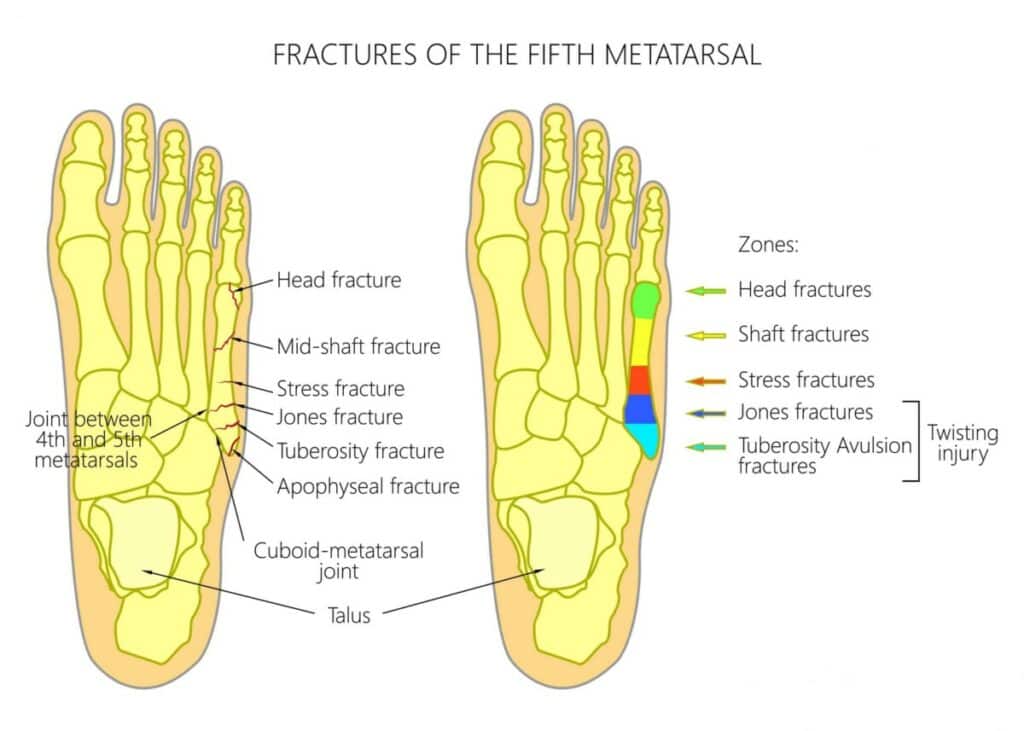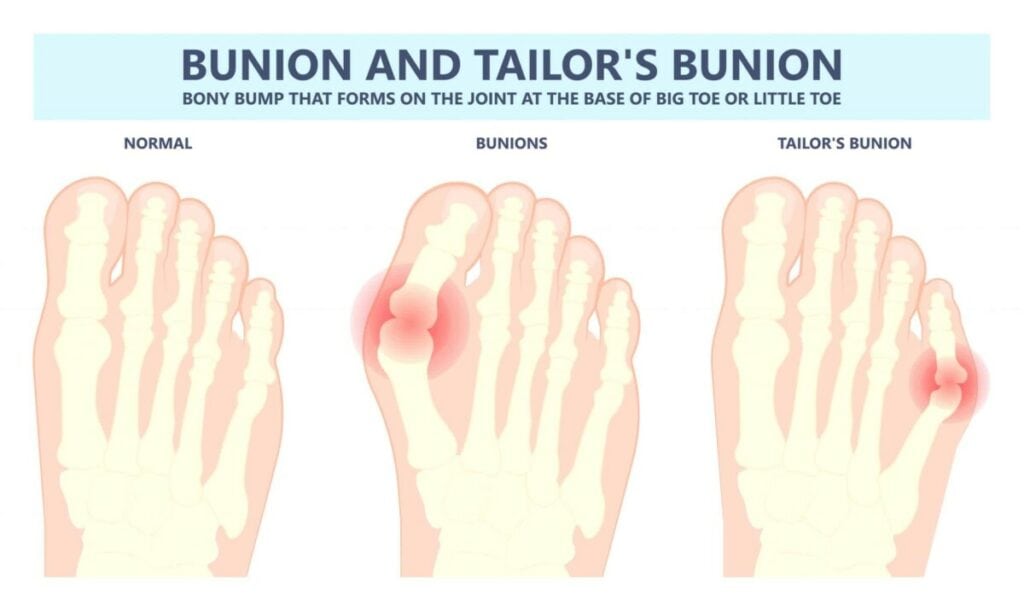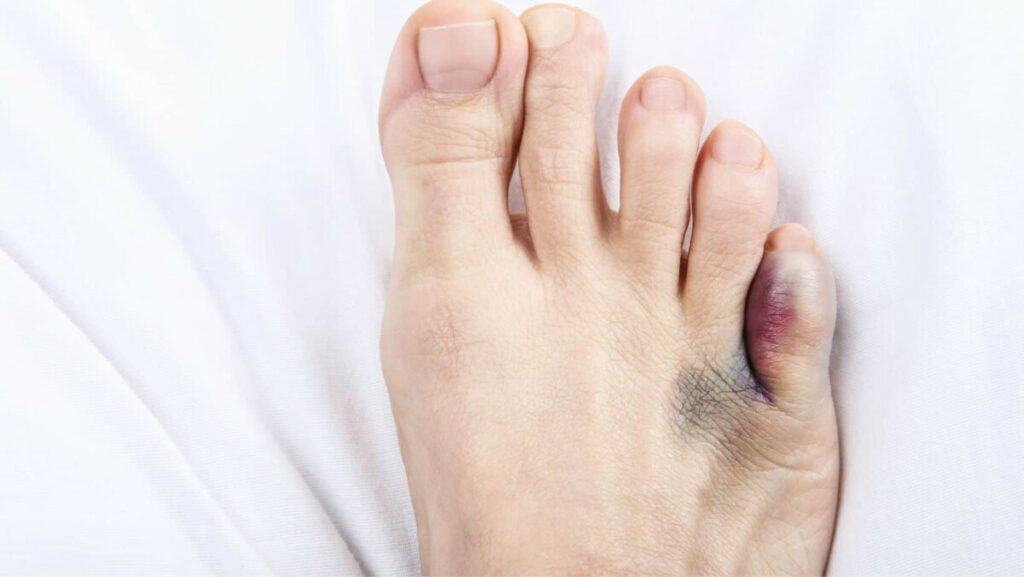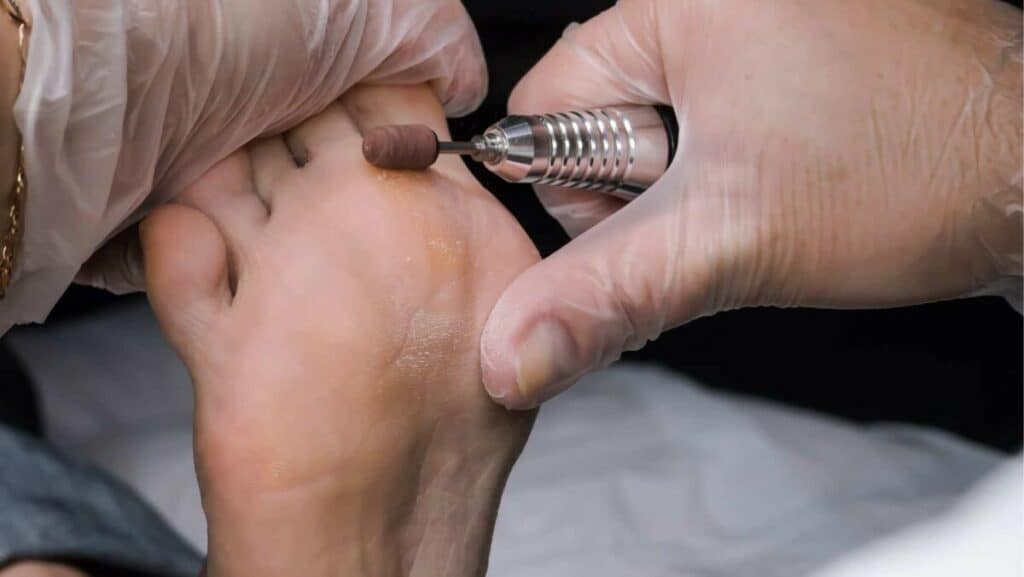Pinky Toe Pain
- Outside Ankle Pain: Running, Standing, Walking - February 14, 2024
- Plantar Fasciitis Taping - January 30, 2024
- Peroneal Tendonitis Taping - January 30, 2024
Pinky Toe Pain, also known as 5th Metatarsal pain, refers to pain on the little toe on the outer side of your foot.
One of the main functions of your Pinky Toe is to assist with balance and proprioception. However, it is on the edge of your foot, which can make it susceptible to injury. Several conditions can cause Pinky Toe pain, such as sprains, fractures, corns and bunions.
In our experience, the most common causes of Pinky Toe pain are tight-fitting shoes and direct impact to the toe from sport. It can also be caused by a heavy object falling on your toe and catching your toe on the corner of an object.
This article covers each condition in detail to help you identify the cause of your Pinky Toe pain and the best treatment. We also have a video to explain each condition in detail:
Conditions That Cause Pinky Toe Pain
Pinky Toe Fracture

A Pinky Toe Fracture, otherwise known as a 5th Metatarsal fracture, is one of the most common types of fracture to the foot.
Repetitive stress to the little toe from impact activities such as running can cause a 5th Metatarsal Stress Fracture, or a sudden ankle sprain can cause an avulsion fracture. An avulsion fracture is where the tendon pulls off a fragment of bone from the Pinky toe.
Symptoms of a Pinky Toe Fracture include pain, swelling and bruising on the 5th Metatarsal, with pain on weight bearing that improves with non-weight bearing.
Related Articles:
Best Walker Boot for 5th Metatarsal Fracture
Symptoms and Treatment for 5th Metatarsal Fracture
Tailor’s Bunion

A Tailor’s Bunion, also known as a Bunionette, causes the little toe to deviate towards the big toe.
The term Tailor’s Bunion was coined from Tailors sitting with their legs crossed and the floor that caused the little toe to turn inwards. Tight-fitting shoes, flat feet or poor walking mechanics can cause a Tailor’s Bunion.
The symptoms of Tailor’s Bunion include pain in the Pinky Toe when walking or running, with symptoms worsening when wearing tight-fitting shoes or high heels. There can be a visible change in the position of the little toe of it turning inwards.
Related Articles:
Symptoms & Treatment for Tailor’s Bunion
Best Shoes for Tailor’s Bunion
Sprained Pinky Toe

A Sprain of the Pinky toe occurs if the little toe is hyperextended.
If this occurs in the big toe, it is known as Turf Toe. A Little toe sprain can occur if the toe gets caught in something and pulled upwards. Common causes of this are walking barefoot or in flip-flops.
Symptoms of a Sprained Pinky Toe include pain and redness around the joint with increased pain on hyperextension of the toe.
Treatment typically includes taping, rest, ice and anti-inflammatories, while a stiff shoe can be helpful.
Corns on the Pinky Toe

A corn is a small area of harder skin that grows inwards like a cone. It can cause intense pain when pressure is applied to the area. A corn can develop on the pinky toe if excess pressure is placed on the toe over a long period.
Common causes of corns on the little toe include wearing tight-fitting shoes or high heels, resulting in the toes rubbing off the side of the shoes, resulting in a corn.
Symptoms include pain when applying pressure to the corn and pain when walking.
Treatment for a corn can be carried out at home with regular use of a pummel stone. If this is unsuccessful, a chiropodist can remove the corn for you.
__________________________________
We are specialists in treating foot conditions such as arthritis in the pinky toe and have experts in foot conditions in our clinic in Fulham, South West London. We also run a specialist Biomechanics and Custom Orthotics Service.
Related Articles:
Best Shoes for Bunions – Insoles for Sesamoiditis – Capsulitis of the Second Toe
